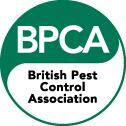Silverfish
Signs of silverfish
Silverfish are small, wingless insects that are often characterised by their silvery-grey, metallic appearance and their distinctive wiggling, fish-like movement. They are common household pests that feed on a variety of starchy materials, such as paper, cardboard, glue, and textiles. Here are some signs of a silverfish infestation:
- Sightings: The most obvious sign of a silverfish infestation is the presence of the insects themselves. You may see them crawling on walls, floors, or other surfaces in your home, especially in areas with high humidity.
- Shed Exoskeletons: Silverfish moult as they grow, shedding their exoskeletons. These cast-off exoskeletons can often be found in areas where silverfish are active.
- Damage to Paper and Books: Silverfish are known to feed on paper, books, magazines, and cardboard. If you notice chewed edges or holes in these materials, it could be a sign of silverfish activity.
- Damage to Clothing and Fabrics: Silverfish may also feed on natural fibres in clothing and fabrics, such as cotton and linen. Look for small holes or irregular damage in your clothing, curtains, or linens.
- Starchy Food Damage: They are attracted to starchy food items like flour, cereal, and pasta. If you find holes or damage to these items in your pantry or kitchen, it may be due to silverfish.
- Presence in Humid Areas: Silverfish are often found in damp or humid areas of the home, such as basements, bathrooms, kitchens, and laundry rooms. They are drawn to these environments because they require moisture to thrive.
- Droppings: Silverfish excrete tiny, pepper-like faeces that can be found near their hiding spots or feeding areas.
- Musty Odour: In some cases, a musty or mouldy odour may be associated with silverfish infestations, especially if they are present in large numbers.
- Damage to Wallpaper: Silverfish may chew holes or leave tiny irregular tracks on wallpaper. They are attracted to the paste used in wallpaper and may feed on it.
- Nest Locations: Silverfish often hide in cracks, crevices, and dark, undisturbed areas during the day. Common hiding places include behind baseboards, in wall voids, under sinks, and in attics.
If you suspect a silverfish infestation in your home, it’s essential to take action to eliminate them. If the infestation is severe or persistent, contact a pest control professional for assistance.


